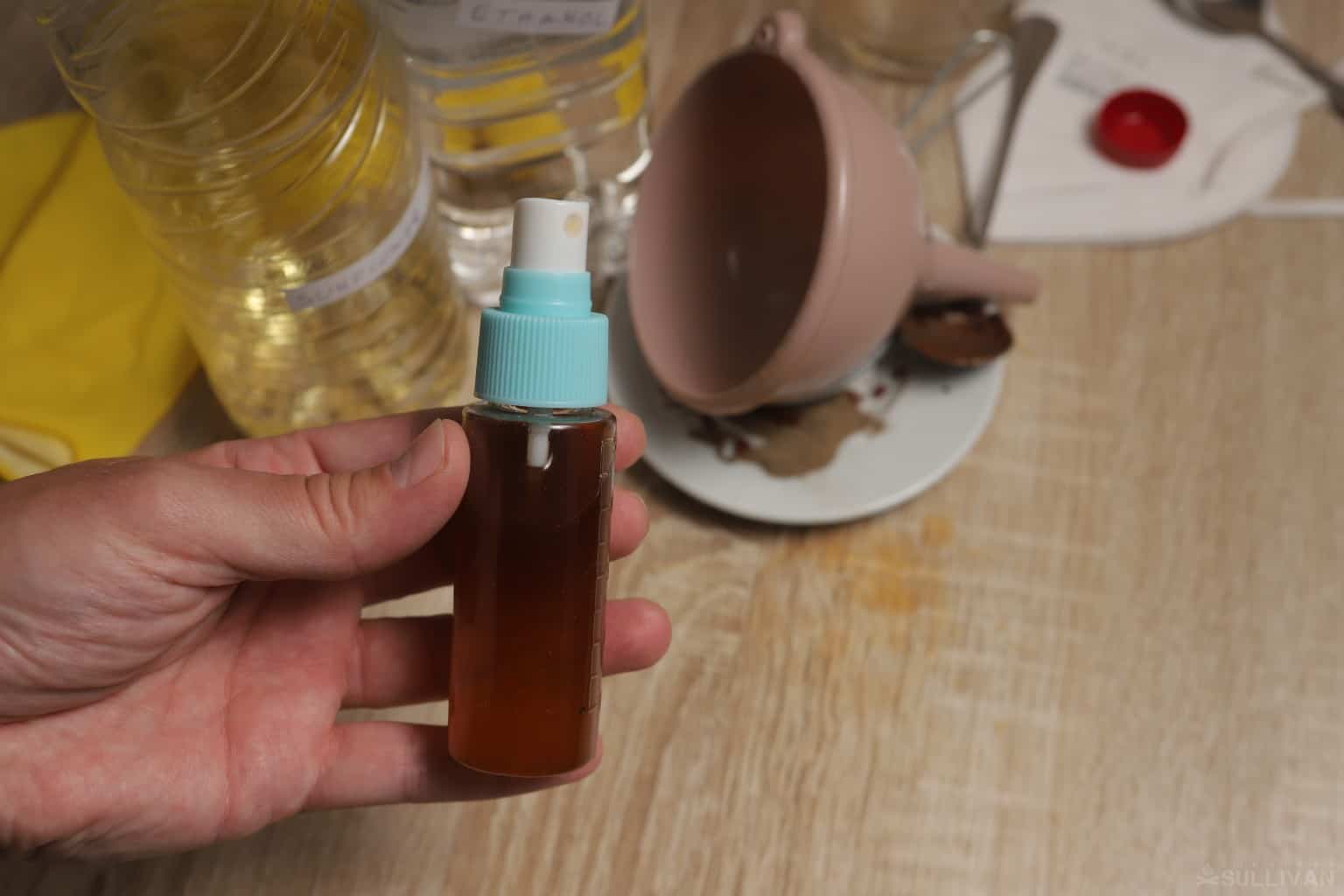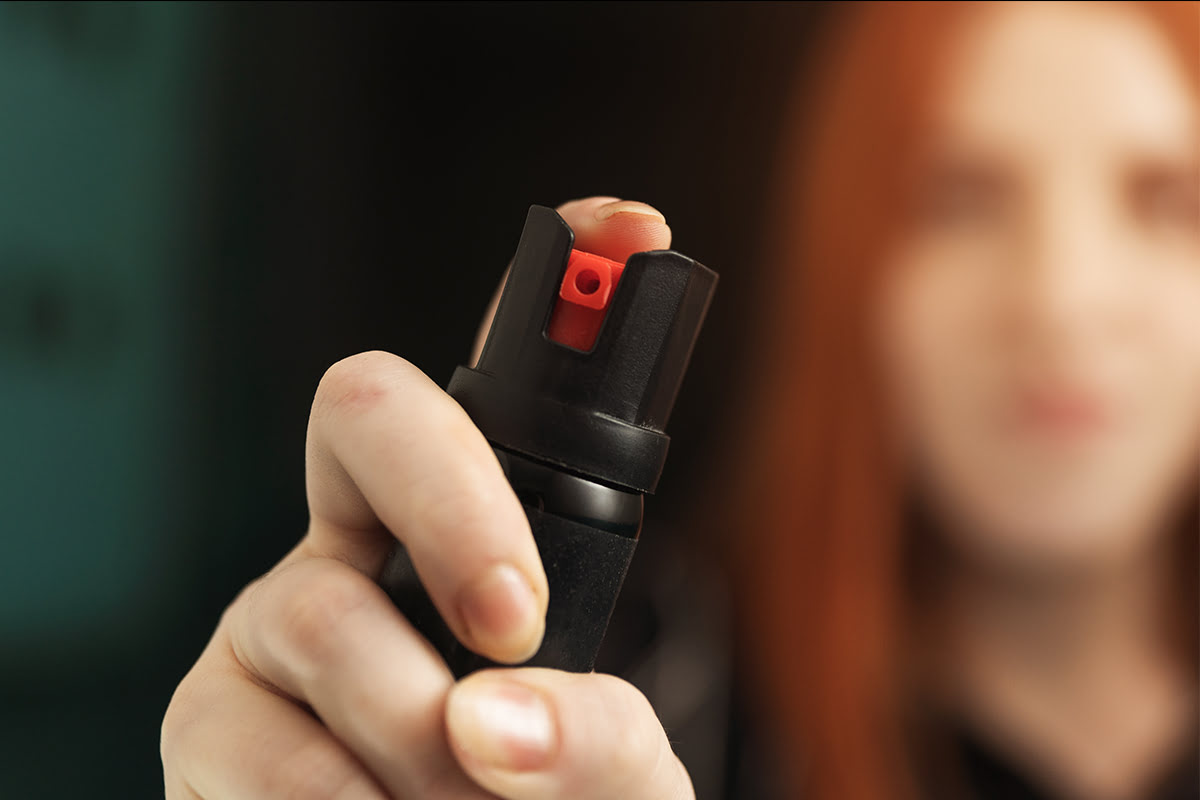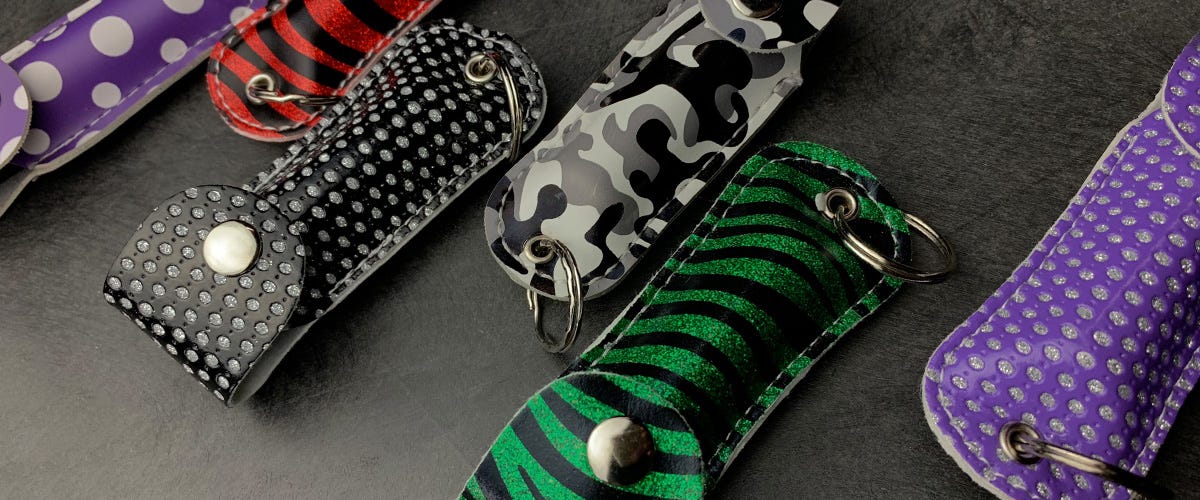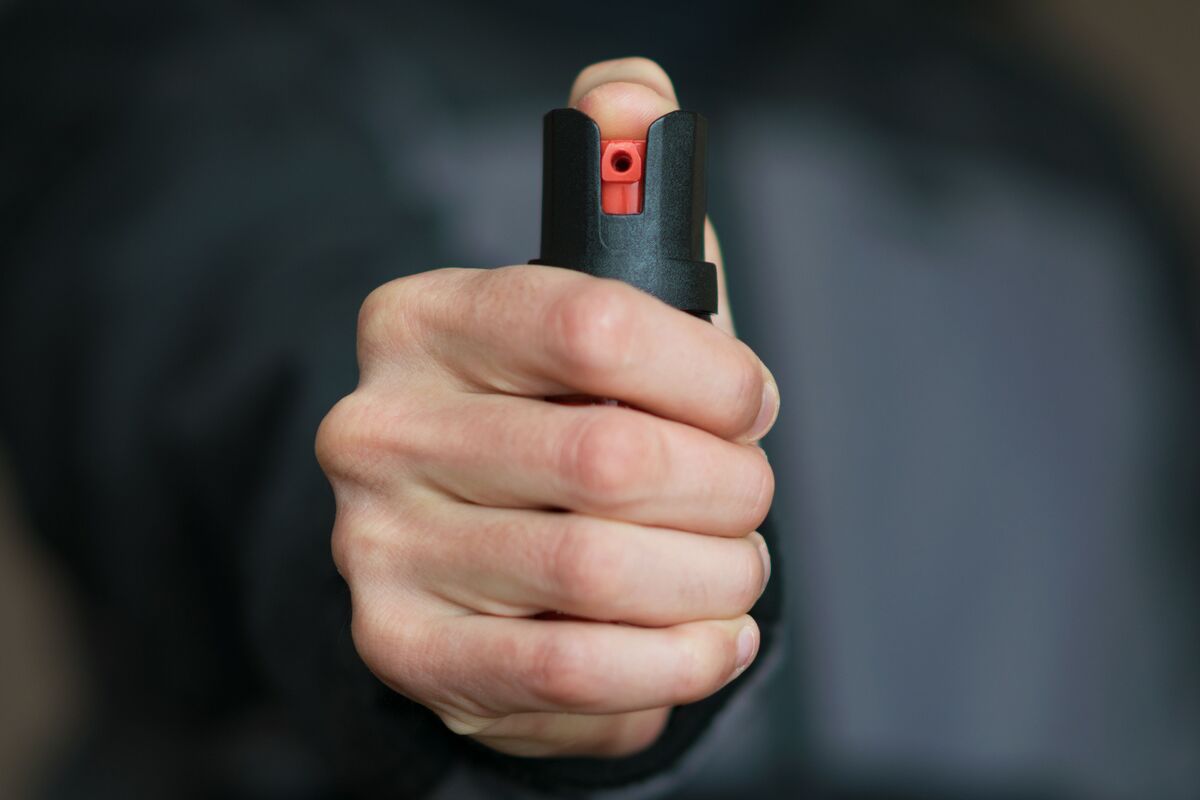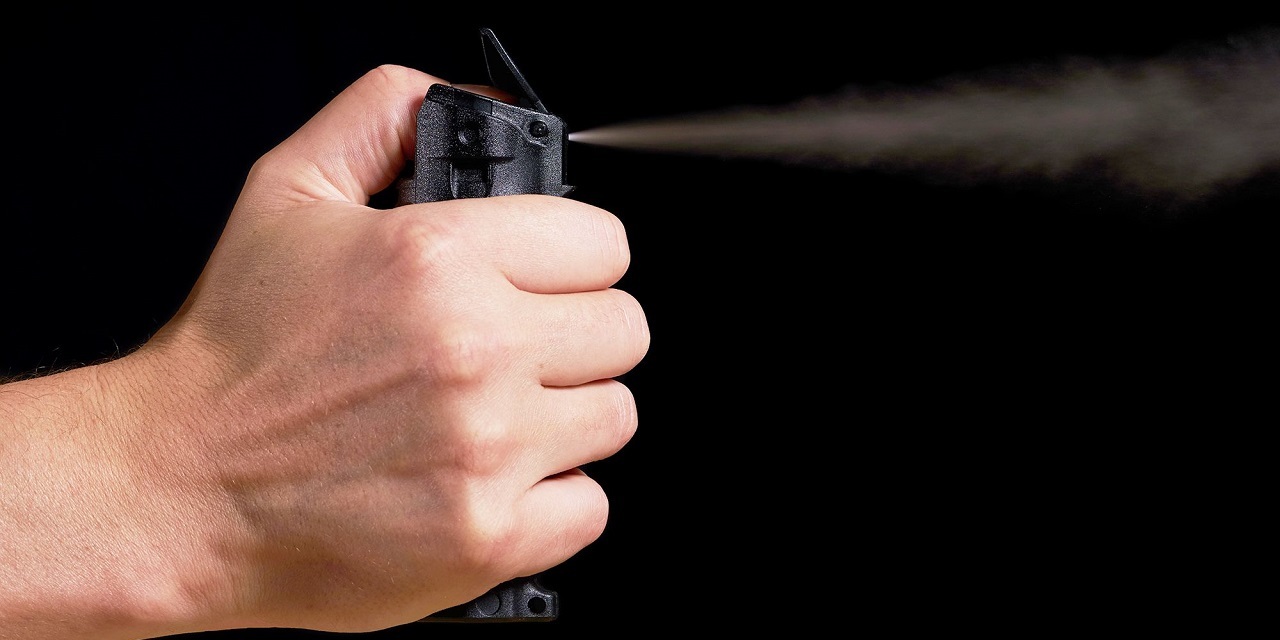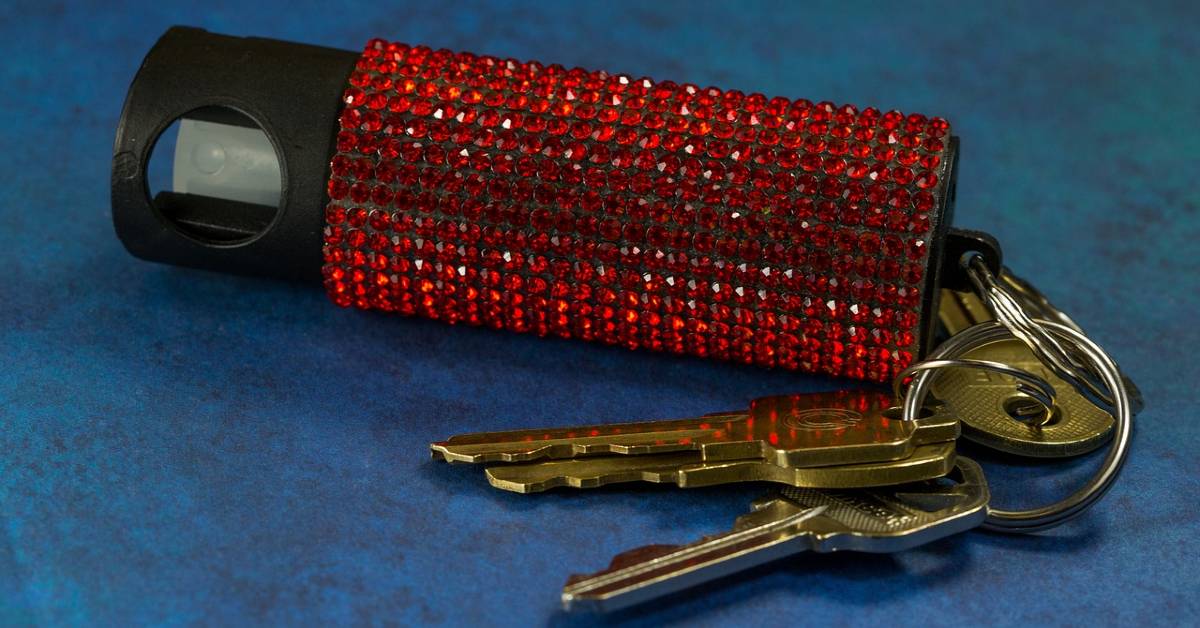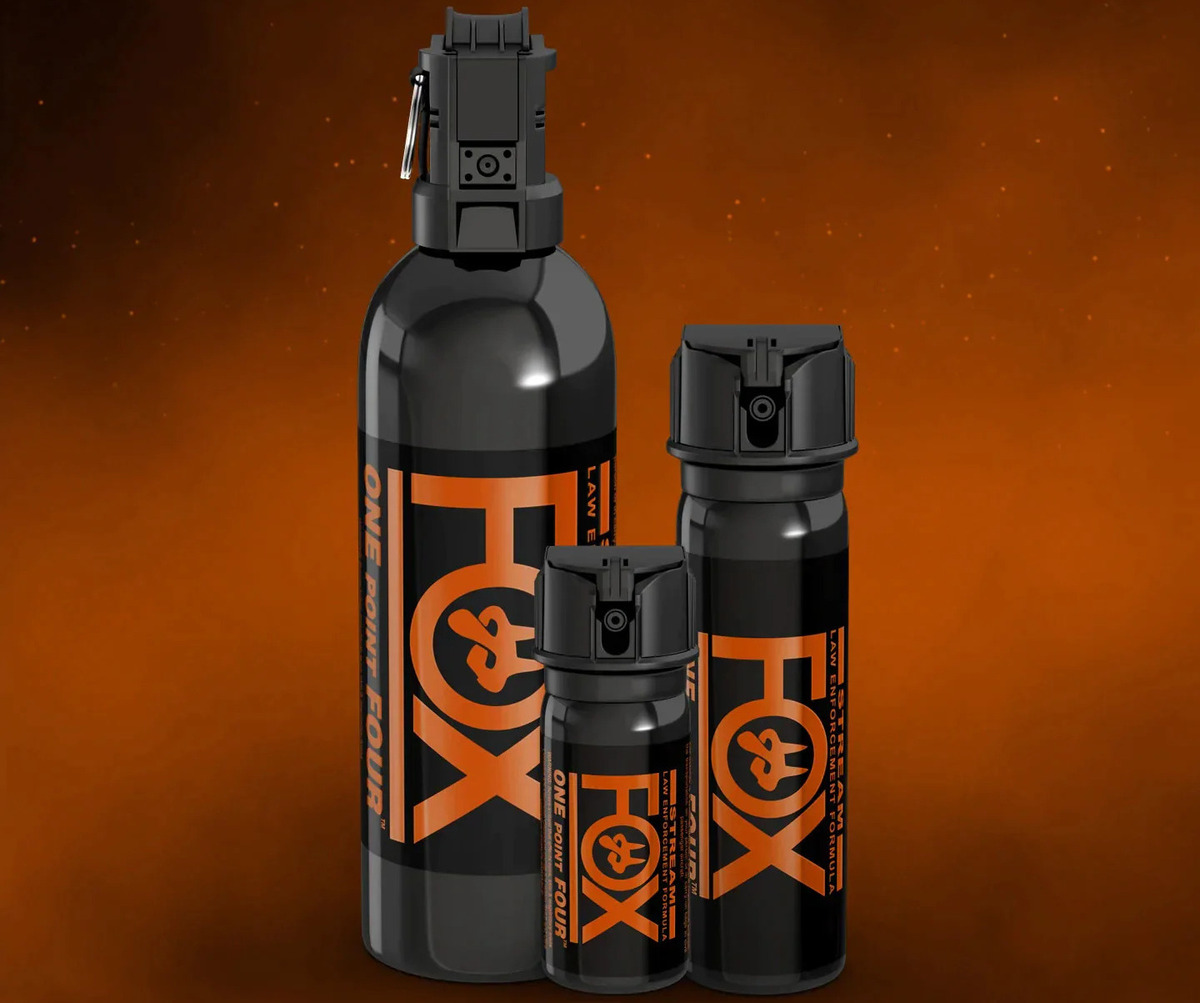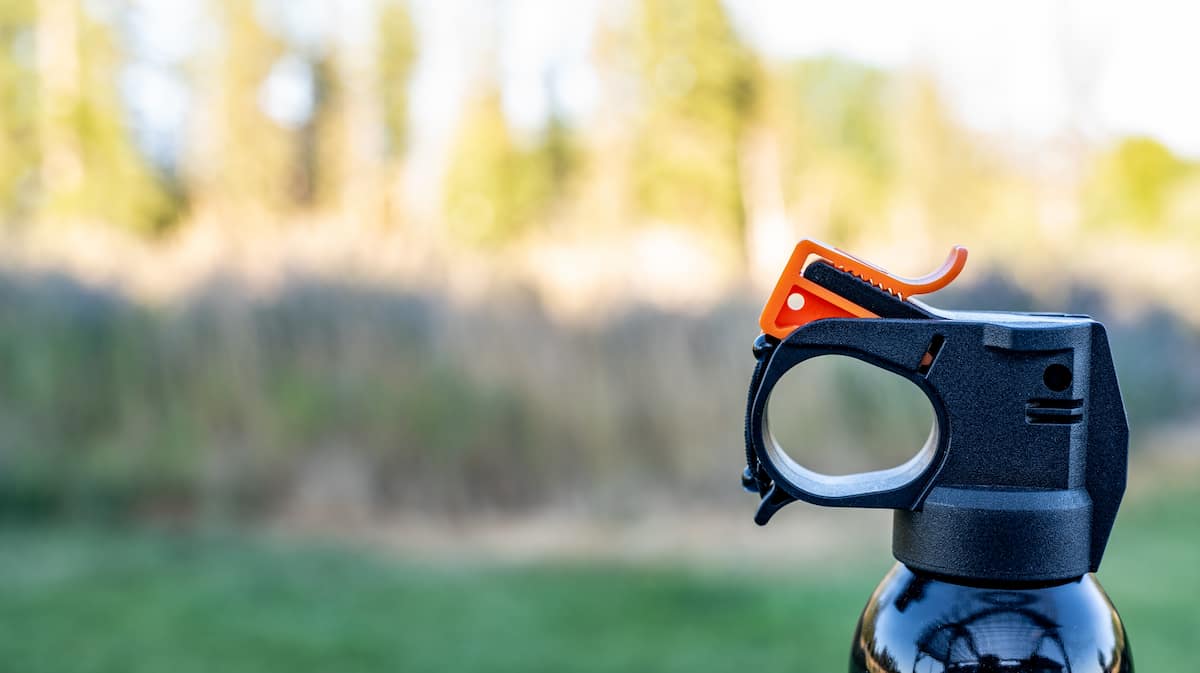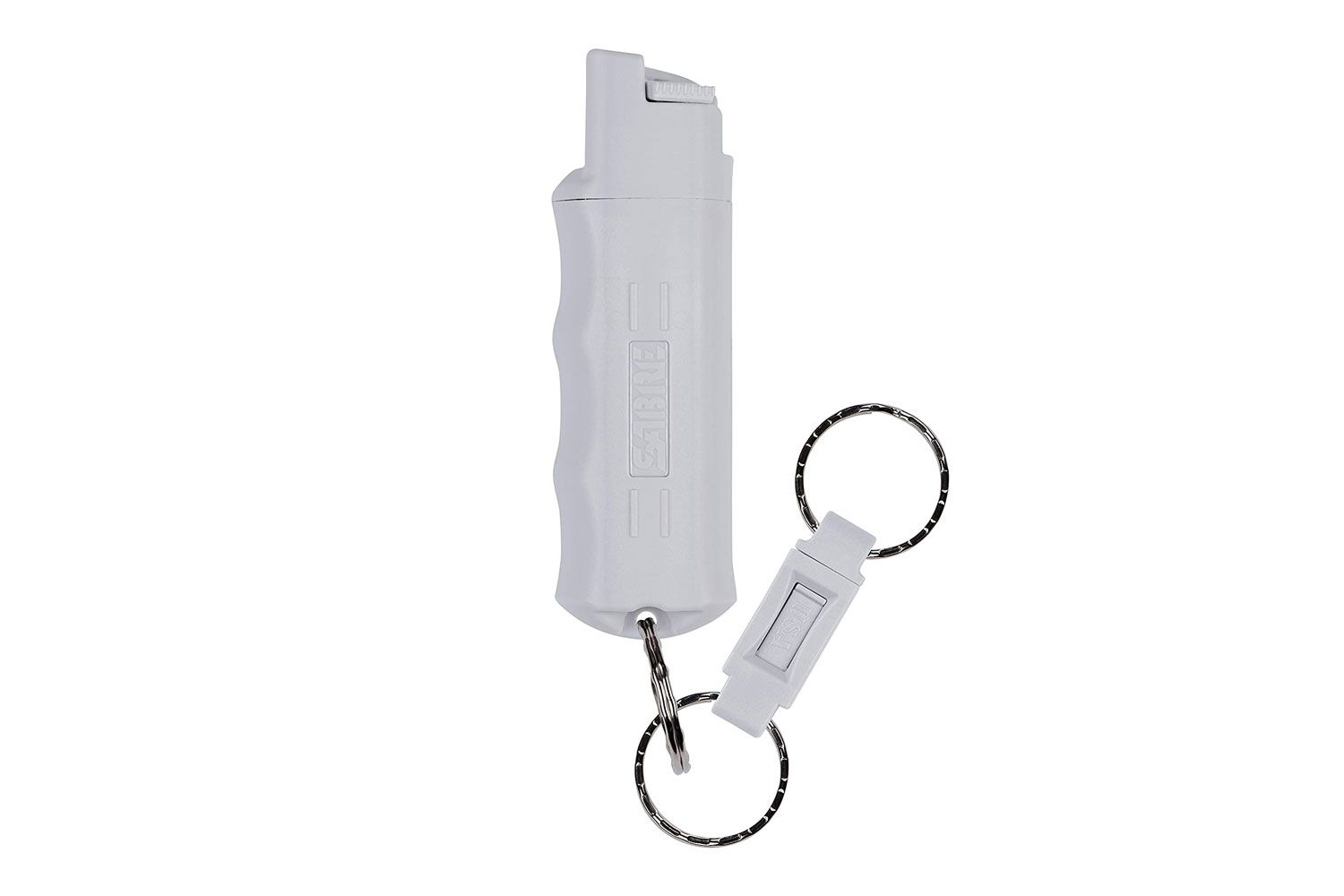Home>Home Security and Surveillance>How To Make Pepper Spray For Dogs
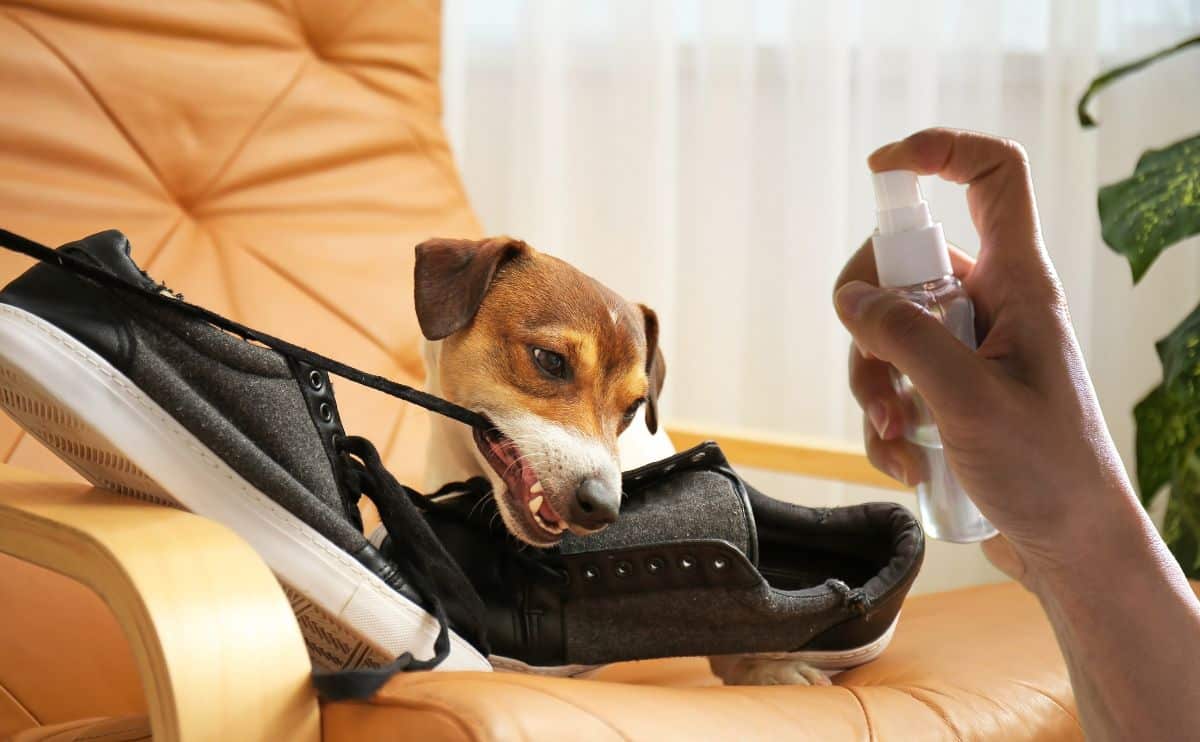

Home Security and Surveillance
How To Make Pepper Spray For Dogs
Modified: March 6, 2024
Learn how to make homemade pepper spray for dogs to enhance your home security and surveillance. Protect your loved ones effectively and safely.
(Many of the links in this article redirect to a specific reviewed product. Your purchase of these products through affiliate links helps to generate commission for Storables.com, at no extra cost. Learn more)
Introduction
Welcome to our comprehensive guide on how to make pepper spray for dogs. In today’s world, keeping our furry friends safe is a top priority, especially when it comes to encounters with aggressive dogs. Pepper spray can be an effective tool to deter potential dangers and protect ourselves and our four-legged companions. In this article, we will explore the reasons why pepper spray for dogs is necessary, the safety precautions to consider, the ingredients and tools needed, and a step-by-step guide on how to make your own pepper spray. So, let’s dive in and equip ourselves with the knowledge needed to ensure the safety of our beloved pets.
Key Takeaways:
- Pepper spray for dogs is a safe, non-lethal tool that can protect you and your furry friend from aggressive encounters, providing peace of mind and a means of self-defense in unexpected situations.
- When using pepper spray for dogs, safety is crucial. Follow instructions, practice proper technique, and consider alternative dog deterrence methods to ensure responsible and effective use.
Read more: What Happens When You Pepper Spray A Dog
Understanding the Need for Pepper Spray for Dogs
As much as we love our dogs and strive to create a safe environment for them, encounters with aggressive dogs can happen unexpectedly. Whether out on walks, at dog parks, or just in the neighborhood, it’s crucial to be prepared for such situations. That’s where pepper spray for dogs comes into play.
Pepper spray, also known as OC spray (oleoresin capsicum), is a non-lethal deterrent that irritates the eyes, nose, and throat of the target, causing temporary discomfort and disabling them temporarily. It is commonly used for self-defense against humans but can also be a valuable tool when it comes to protecting ourselves and our dogs from aggressive dogs.
Here are a few key reasons why pepper spray for dogs is essential:
- Safety: Pepper spray provides a means of self-defense when confronted by aggressive dogs. It helps create distance and neutralize the threat, giving you and your dog a chance to escape the situation safely.
- Easy to Use: Pepper spray is simple to use and doesn’t require any specialized training. With a quick press of the button or trigger, you can deploy the spray and deter an aggressive dog.
- Non-Lethal: Unlike other self-defense methods, such as firearms, pepper spray is a non-lethal option. It temporarily incapacitates the target without causing severe harm, making it a more ethical choice.
- Legal and Widely Available: Pepper spray for dogs is legal to carry in many jurisdictions. It is also readily available in stores and online, making it accessible for dog owners who want an added layer of protection.
- Peace of Mind: Carrying pepper spray for dogs provides peace of mind for dog owners. Knowing that you have a tool that can help deter aggressive dogs allows you to enjoy walks and outings with your furry friend without constant worry.
While pepper spray can be a valuable asset in dog-related emergencies, it’s important to understand that it should only be used as a last resort. It’s always best to try and de-escalate the situation or find alternative strategies for dog deterrence before resorting to the use of pepper spray.
Now that we’ve established the importance of pepper spray for dogs, let’s move on to the safety precautions you need to be aware of before using it.
Safety Precautions
When it comes to using pepper spray for dogs, safety should always be the top priority. While pepper spray is considered safe when used correctly, it’s essential to take precautions to prevent any unintended harm. Here are some important safety measures to keep in mind:
- Read and Follow Instructions: Before using pepper spray, carefully read the instructions provided by the manufacturer. Each brand may have specific guidelines regarding usage and storage. Adhering to these instructions is crucial to ensure effective and safe application.
- Practice Proper Technique: Familiarize yourself with the proper technique for using pepper spray. Ensure you know how to aim and operate the spray canister effectively. Practice your aim in a controlled environment to improve accuracy and confidence in case of a real situation.
- Consider Wind Direction: Pay attention to the wind direction before deploying pepper spray. You want to ensure that the wind is blowing in a direction where it won’t carry the spray back towards you, your dog, or innocent bystanders. Position yourself accordingly to minimize the risk of exposure.
- Keep a Safe Distance: Maintain a safe distance from the aggressive dog when using pepper spray. The recommended distance can vary depending on the type of spray and brand, so refer to the instructions for guidance. By keeping a safe distance, you minimize the risk of the spray affecting you or your dog.
- Protective Gear: Consider wearing protective gear such as safety goggles or glasses when using pepper spray for added protection. These protective measures can help shield your eyes from any accidental exposure to the spray.
- Store Properly: When not in use, store your pepper spray in a cool, dry place away from direct sunlight and heat sources. Ensure it is out of reach of children and pets to prevent any accidental discharge.
- Check Expiration Date: Pepper spray has an expiration date, usually indicated on the canister. Check the date regularly and replace the spray before it expires to ensure it remains effective when needed.
- Follow Local Laws and Regulations: Familiarize yourself with the laws and regulations concerning pepper spray in your area. Some jurisdictions may have specific restrictions on its use or require permits for carrying it. Adhering to these laws will prevent any legal complications.
By taking these safety precautions into account, you can use pepper spray for dogs responsibly and effectively. Next, let’s move on to the necessary ingredients and tools you’ll need for making your own pepper spray.
Gathering the Necessary Ingredients and Tools
If you’re interested in making your own pepper spray for dogs, you’ll need to gather a few key ingredients and tools. Making pepper spray at home is a cost-effective alternative to purchasing commercial sprays and allows you to have control over the ingredients used. Here’s what you’ll need:
Ingredients:
- Cayenne pepper powder: This is the main ingredient that gives pepper spray its potency. You can find cayenne pepper powder at most grocery stores or online.
- Water: Water is needed to create the liquid base for the pepper spray.
- Optional: Vinegar or rubbing alcohol: Adding a small amount of vinegar or rubbing alcohol can help preserve the spray and increase its effectiveness.
Tools:
- Small spray bottle: Look for a small, portable spray bottle that can be easily carried in your pocket or bag.
- Measuring spoons: These will be used to measure the ingredients accurately.
- Funnel: A funnel can help you pour the ingredients into the spray bottle without any spills or mess.
- Stirrer: Use a spoon or disposable stirrer to mix the ingredients thoroughly.
These ingredients and tools are readily available and relatively inexpensive. You may already have some of them at home, making the process even more convenient.
Now that you’ve gathered all the necessary ingredients and tools, it’s time to learn how to make pepper spray for dogs. Follow the step-by-step guide in the next section to create your own homemade pepper spray.
When making pepper spray for dogs, use a mixture of water and hot pepper juice or hot sauce. Be sure to test the spray in a safe area before using it on a dog.
Step-by-Step Guide: Making Pepper Spray for Dogs
Creating your own pepper spray for dogs is a simple process that requires just a few steps. Follow this step-by-step guide to make your homemade pepper spray:
- Measure the Ingredients: Begin by measuring the ingredients accurately. Use the following measurements as a guide:
- 1 tablespoon of cayenne pepper powder
- 1 cup of water
- Optional: 1 teaspoon of vinegar or rubbing alcohol
- Mix the Ingredients: In a bowl, combine the cayenne pepper powder and water. Stir the mixture well to ensure the pepper is thoroughly dissolved.
- Add Optional Ingredient: If you choose to include vinegar or rubbing alcohol, add it to the mixture and stir again to incorporate.
- Transfer to Spray Bottle: Once the mixture is well mixed, use a funnel to pour it into the spray bottle. Be careful not to spill any of the mixture during the transfer.
- Secure the Spray Bottle: Ensure the spray bottle is properly sealed to prevent any leakage.
- Label and Date: It’s important to label the spray bottle with the contents and date of creation. This will help you keep track of its expiration date and distinguish it from other sprays.
- Store Properly: Store the pepper spray in a cool, dry place away from direct sunlight and heat sources. Make sure it is out of reach of children and pets.
That’s it! Your homemade pepper spray for dogs is now ready to use. Remember to shake the bottle well before each use to ensure the ingredients are properly mixed.
Before we move on, it’s essential to highlight the importance of using pepper spray for dogs responsibly and as a last resort. Explore alternative solutions for dog deterrence and use pepper spray only when absolutely necessary. In the next section, we will discuss some tips for safe and effective use of pepper spray for dogs.
Read more: How To Make A Cayenne Pepper Spray
Tips for Safe and Effective Use
When it comes to using pepper spray for dogs, following some key tips can ensure its safe and effective use. Here are some important guidelines to keep in mind:
- Stay Calm: In a potentially aggressive dog encounter, it’s crucial to remain calm. Keeping a clear mind will allow you to make rational decisions and use pepper spray effectively.
- Assess the Situation: Evaluate the dog’s behavior before deploying pepper spray. Assess whether the dog poses an immediate threat or if there’s a chance to de-escalate the situation peacefully.
- Use as a Last Resort: Pepper spray should be used as a last resort when all other methods of de-escalation or dog deterrence have failed. Exhaust all possible alternatives before resorting to using pepper spray.
- Target the Face: Aim for the dog’s face when deploying pepper spray. The eyes and nose are the most sensitive areas, and targeting them increases the chances of temporarily disabling the dog.
- Short Bursts: Instead of spraying continuously, use short bursts of pepper spray. This helps conserve the spray and ensures that the dog is exposed to an adequate amount to deter aggression.
- Move Away Safely: After using pepper spray, move away from the aggressive dog calmly. Create distance between yourself, your dog, and the aggressive dog. Do not engage further as it may escalate the situation.
- Seek Medical Attention if Necessary: If you or your dog accidentally come into contact with the pepper spray, seek medical attention if needed. Rinse eyes with water and consult a healthcare professional for further guidance.
- Practice with Inert Spray: Before using pepper spray for real, consider practicing with an inert spray. Inert sprays mimic the look and feel of real pepper spray but do not contain the active ingredient. This allows you to become familiar with how the spray works and builds confidence in its use.
- Check Expiration Date: Regularly check the expiration date of your pepper spray and replace it when needed. Expired pepper spray may not be as effective, and it’s essential to have a fresh supply when required.
Remember, pepper spray is a defensive tool, and responsible use is crucial. Always be aware of your surroundings and respect local laws and regulations regarding the use of pepper spray.
Now that you are equipped with information on safe and effective use, let’s explore some alternative solutions for dog deterrence in the next section.
Alternative Solutions for Dog Deterrence
While pepper spray for dogs can be an effective tool, it’s essential to explore alternative solutions for dog deterrence as well. Here are some other methods that can help keep you and your dog safe:
- Education and Behavior Training: Properly training your dog is crucial in preventing aggressive encounters. Teaching basic commands like “sit,” “stay,” and “leave it” can help keep your dog under control in various situations.
- Awareness and Avoidance: Stay alert and be aware of your surroundings when walking or spending time outdoors with your dog. Avoid areas known for aggressive dog incidents or adjust your walking routes to minimize potential conflicts.
- Socialization: Socializing your dog from a young age can help them become comfortable around other dogs and minimize aggressive behavior. Enroll your dog in obedience classes or schedule playdates with well-behaved canines to promote positive interactions.
- Leash Etiquette: Keep your dog on a leash at all times, especially in public places. This not only ensures their safety but also shows respect for others who may be uncomfortable or fearful of unrestrained dogs.
- Carry a Deterrent Noise Device: Some dogs may respond to high-pitched noises that deter their behavior. Consider carrying a small deterrent noise device that can help distract or discourage an aggressive dog from approaching.
- Use Visual Barriers: If you encounter an aggressive dog while out walking, try using visual barriers to create separation. This can be done by using a nearby object like a parked car or a tree to create a physical barrier between you and the other dog.
- Avoid Eye Contact and Remain Calm: If you come across an aggressive dog, avoid making direct eye contact, as this can be seen as a challenge. Stay calm and avoid sudden movements that may escalate the situation.
- Carry a Walking Stick or Umbrella: Carrying a walking stick or an umbrella can act as a visual deterrent and provide a physical barrier between you and an aggressive dog. Use it to create distance if necessary.
- Seek Professional Assistance: If your dog displays aggressive behavior or you frequently encounter aggressive dogs, consider seeking help from a professional dog trainer or behaviorist. They can assess the situation and provide tailored guidance and training techniques.
Remember, each dog and situation is unique, so it’s essential to assess the best approach based on the circumstances. Using a combination of these alternative solutions, along with pepper spray, can help enhance the safety and well-being of both you and your dog.
As we conclude, it’s crucial to reiterate that pepper spray should be a last resort and used responsibly. Your primary goal is to protect yourself and your dog and promote a safe and harmonious environment for all. Stay informed, stay vigilant, and take the necessary precautions to ensure the safety of your furry companion.
Do you have any other questions or topics you’d like to explore? Feel free to ask!
Conclusion
Ensuring the safety of our dogs is a top priority for every pet owner. In this comprehensive guide, we have explored the importance of pepper spray for dogs, the safety precautions to consider, and how to make your own homemade pepper spray. We have also discussed alternative solutions for dog deterrence to provide a well-rounded approach to keeping ourselves and our furry friends safe.
Pepper spray for dogs can be a valuable tool in situations where aggressive encounters occur unexpectedly. It provides a non-lethal means of defense, allowing us to create distance and temporarily disable an aggressive dog, giving us a chance to escape safely. However, it’s important to remember that pepper spray should always be used as a last resort after exhausting all other methods of de-escalation and dog deterrence.
By following the safety precautions outlined in this guide, you can use pepper spray responsibly and effectively. Remember to practice proper technique, consider wind direction, and maintain a safe distance when deploying the spray. Additionally, make sure to store the pepper spray properly and check its expiration date regularly to ensure its effectiveness when needed.
While pepper spray is a useful tool, we must also consider alternative solutions for dog deterrence. Education and behavior training, awareness and avoidance, socialization, and utilizing deterrent noise devices are all effective methods in preventing aggressive incidents from occurring. It’s crucial to be proactive and take preventative measures to keep ourselves and our dogs safe during outdoor activities.
Ultimately, the safety and well-being of our dogs depend on our preparedness and responsible actions. By combining the use of pepper spray with other dog deterrence strategies, we can create a secure environment for our furry companions and enjoy our time together outdoors.
We hope this guide has provided you with valuable insights and practical knowledge on the use of pepper spray for dogs and alternative solutions for dog deterrence. Remember, knowledge is power, and being equipped with the right tools and information is essential in ensuring the safety of both you and your beloved canine companion.
If you have any further questions or would like to explore more on this topic, feel free to reach out. Stay vigilant, stay safe, and may every outing with your dog be a joyful and secure experience!
Frequently Asked Questions about How To Make Pepper Spray For Dogs
Was this page helpful?
At Storables.com, we guarantee accurate and reliable information. Our content, validated by Expert Board Contributors, is crafted following stringent Editorial Policies. We're committed to providing you with well-researched, expert-backed insights for all your informational needs.
